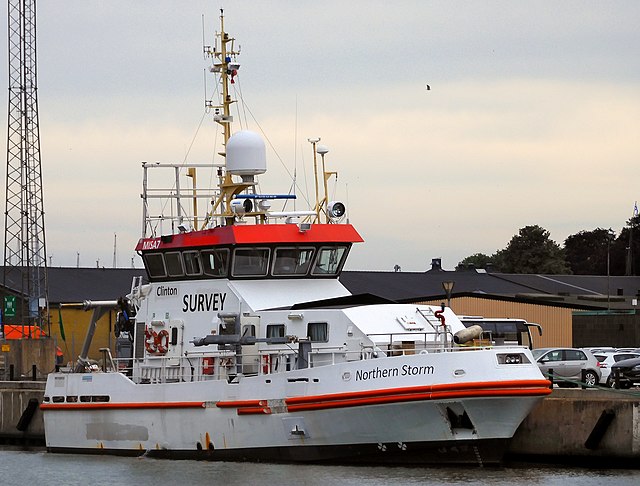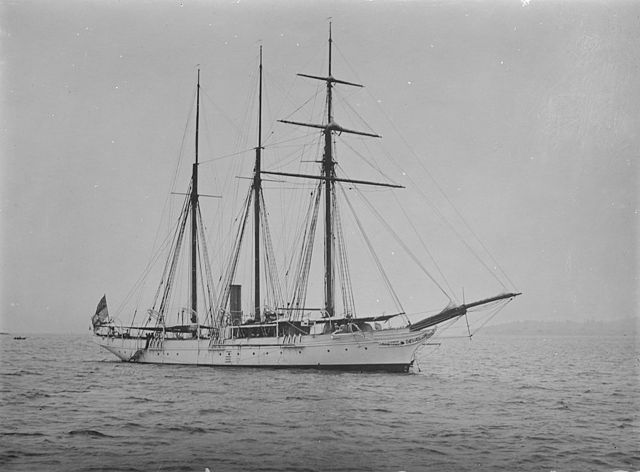Hydrographic survey is the science of measurement and description of features which affect maritime navigation, marine construction, dredging, offshore wind farms, offshore oil exploration and drilling and related activities. Surveys may also be conducted to determine the route of subsea cables such as telecommunications cables, cables associated with wind farms, and HVDC power cables. Strong emphasis is placed on soundings, shorelines, tides, currents, seabed and submerged obstructions that relate to the previously mentioned activities. The term hydrography is used synonymously to describe maritime cartography, which in the final stages of the hydrographic process uses the raw data collected through hydrographic survey into information usable by the end user.
A nostalgic 1985 sketch of hydrographic surveying in Alaska.
A ship for updating nautical charts.
Neptune, a privately owned survey ship based in Chicago, Illinois.
Clintons Northern Storm in the harbour of Ystad 7 July 2021.
Hydrography is the branch of applied sciences which deals with the measurement and description of the physical features of oceans, seas, coastal areas, lakes and rivers, as well as with the prediction of their change over time, for the primary purpose of safety of navigation and in support of all other marine activities, including economic development, security and defense, scientific research, and environmental protection.
Table of geography, hydrography, and navigation, from a 1728 Cyclopaedia.
Alexander Dalrymple, the first Hydrographer of the Navy in the United Kingdom, appointed in 1795.
HMS Waterwitch, a hydrographic survey vessel







